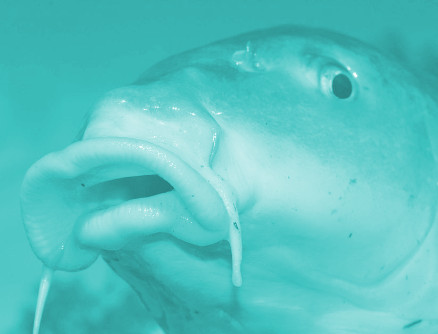Carp plan slammed
 Scientists have slammed a plan to infect troublesome carp with herpes.
Scientists have slammed a plan to infect troublesome carp with herpes.
Plans to release a virus to reduce numbers of invasive Common Carp in Australia are unlikely to work and should be dropped, researchers say.
The Federal Government wants to release Koi Herpesvirus (KHV) into Australia’s largest freshwater supply to kill non-native carp.
The carp cause ecological damage in large numbers by uprooting vegetation and increasing sediment in the water, with significant knock-on effects for other species in the ecosystem.
While many ecologists agree on the need for some kind of control measures, the KHV plan may not be the way.
A new study demonstrates that Common Carp would evolve resistance to the virus and carp numbers would soon recover.
“Viral biocontrol is highly questionable and, as our study shows, it is unlikely to reduce carp numbers in the long term,” said researcher Dr Jackie Lighten.
“Our modelling shows that even under the most optimal conditions for biocontrol, populations quickly recover.
“Releasing KHV carries significant risks to human and ecosystem health, which likely outweigh the benefits, and we have previously urged further detailed research to avoid an unnecessary ecological catastrophe.
“Based on our findings, we believe the plan to control Australia's carp with KHV is dead in the water.”
Dr Lighten previously argued in the Senate that the Australia’s National Carp Control Program (NCCP) was omitting key areas of research from its work.
One component of this is computer simulation modelling to assess if the virus would effectively kill the fish in light of the genetic component of resistance to KHV, which resides in the global carp population.
In the recent study, experts built a simulation model to examine realistic interactions among carp, virus and disease resistance, to estimate how long it would take carp populations to recover even if 95 per cent of them were wiped out.
The authors say that even under a “best-case scenario” for the virus to eradicate carp – the carp population still evolved resistance, making future outbreaks of the virus ineffective.
The type of modelling used is “widely accepted as the current gold standard in projecting disease outcomes”, according to another researcher, Professor Cock van Oosterhout.
“But, worryingly, the NCCP chose to ignore this approach,” he said
“Also, they didn’t model the impact of disease resistance, which is crucial in understanding the epidemiology of infectious disease.”
The experts recommend that the Federal Government takes steps to significantly improve the health of its waterways, rather than releasing a potentially catastrophic virus into its ecosystems.
“Freshwater is in desperate shortage in large parts of Australia, so the first step must be to reduce the amount of water extracted for thirsty crops such as cotton,” Dr Lighten said.
“This would help to restore habitat for native species, thereby reducing habitat for carp.
“Proper governance is what’s needed, rather than giving an unhealthy and fragile ecosystem a foreign virus, which could significantly tip the balance out of favour for native species.”
Dr Lighten added: “If the current global Covid-19 pandemic has reminded of anything, it’s that viruses are hard to predict and manage.
“It is madness that the release of a high pathogenic virus is being considered as one of the first steps to restore a damaged and fragile ecosystem.
“This is even more so, considering that very little progress has been made in reducing the volume of water extracted from the Murray-Darling Basin, which should be primary in restoring river health over releasing a pathogen that could have significant ecological repercussions.”








 Print
Print